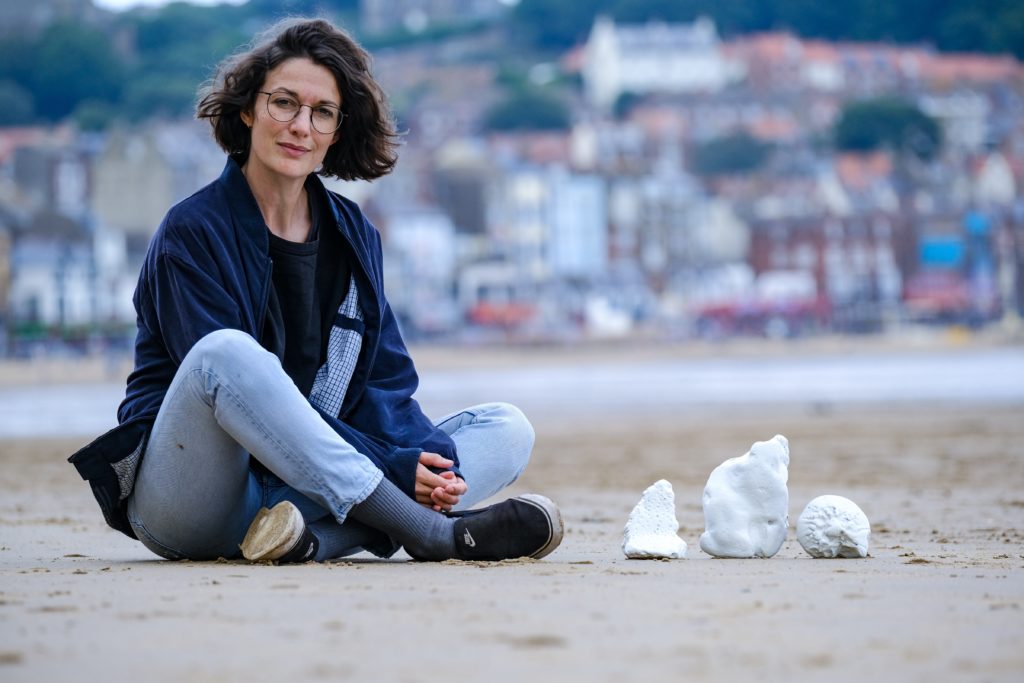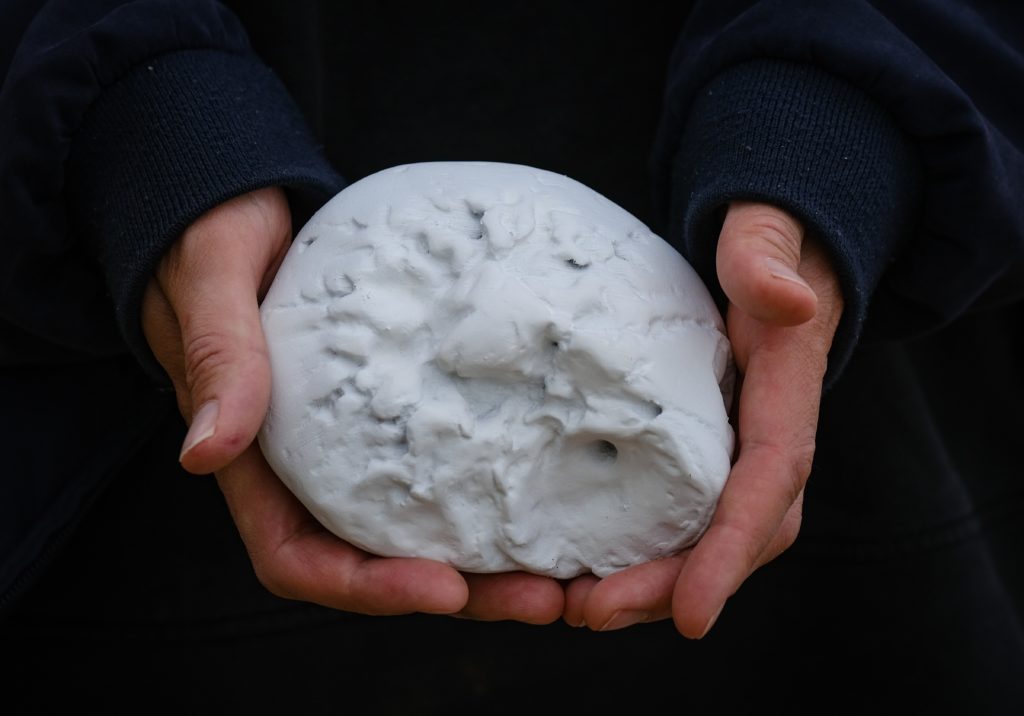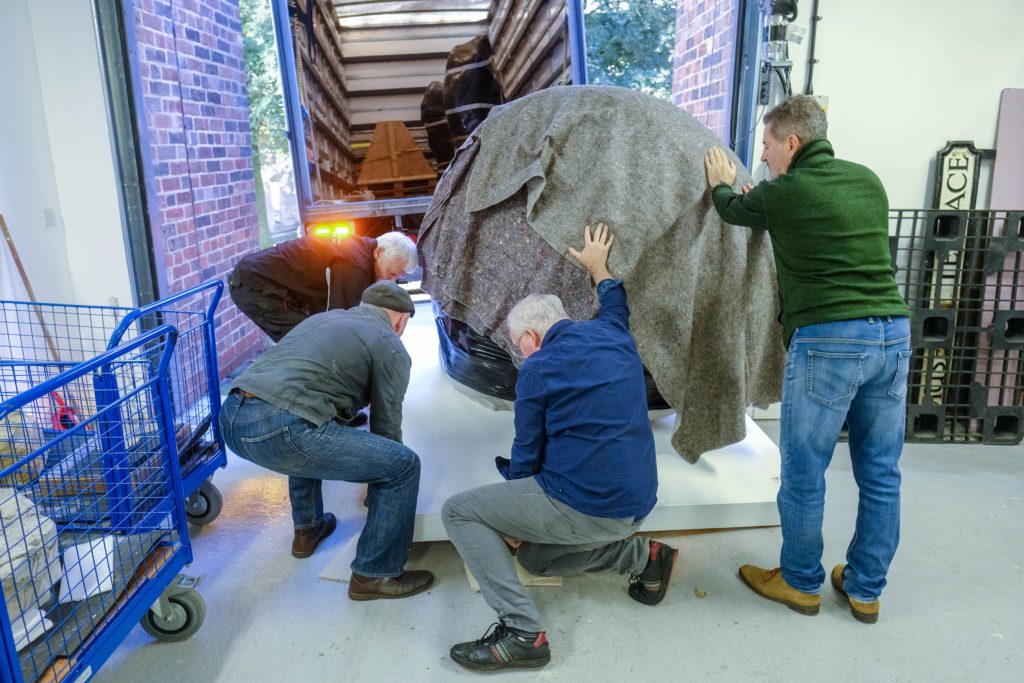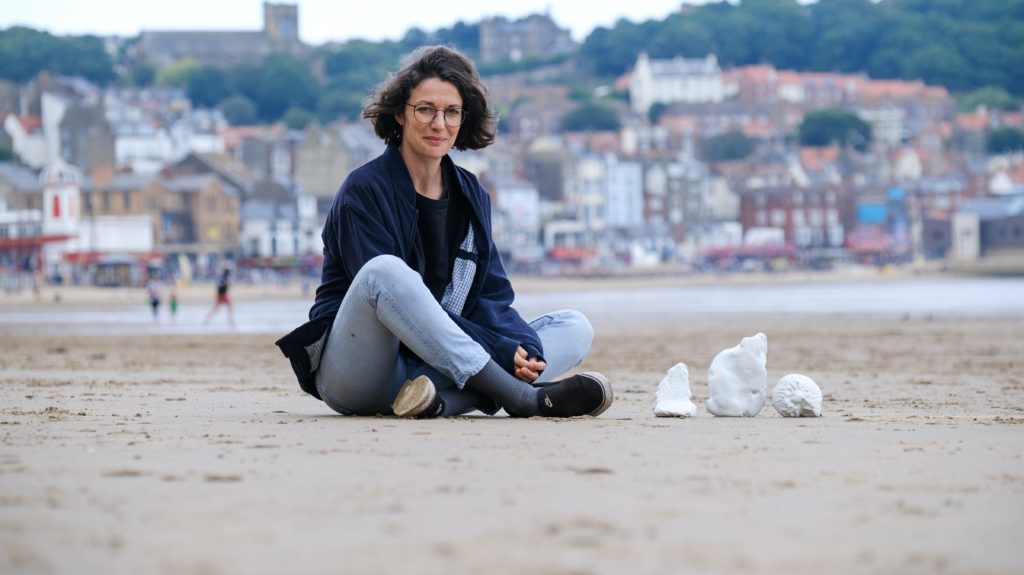
EMMA Gibson’s upcoming Quicksand exhibition aims to raise awareness of “one of our most under-appreciated natural commodities”.
On show at Scarborough Art Gallery from February 12 to June 5, Gibson’s triptych of sculptures transforms minuscule grains of sand into megalithic forms, putting this endangered but seemingly ubiquitous material – used to make anything from phone screens to windows, from plastics to paint – under the microscope.
Applying micro-3D scanning technology, Gibson worked with the Imaging and Analysis Centre at the Natural History Museum, London, to discover the otherworldly shapes of individual sand grains before recasting them as colossal forms.
Each piece was made using recycled plaster and clay, timber and a pioneering resin made from recycled plastic bottles that have been redirected from landfill and the oceans.
Simon Hedges, head of curation, exhibitions and collections at Scarborough Museums Trust, says: “Sand is running out all over the world – it’s a global problem; it’s climate change with bells on. It may be difficult to believe, but sand is limited – and it’s critical as a commodity for so many types of technology.

“It’s estimated that, for construction alone, the world consumes roughly 40 to 50 billion tons of sand on an annual basis. That way outstrips the rate at which sand is being naturally replenished by the weathering of rocks by wind and water.”
As a museum in a coastal setting, Scarborough Art Gallery “feels it’s our responsibility to help raise awareness of this issue,” says Hedges. “Emma’s sculptures are a particularly stunning way of doing that. Three giant grains of sand, each over a metre tall, have been created after being magnified nearly 3,000 times,” he continues.
“They represent just three of the many different types of sand there are – a fossil foraminifera, a rolled-up piece of quartz and a chip from a shell.”
Gibson says: “Quicksand is about assumptions in relation to perceptions: we assume that there is the same amount of sand available as stars in the sky. People say: ‘Can’t you just use sand from the Sahara to build stuff? We’ve got loads of sand.’ But you can’t because it’s wind-blown and all the grains are circular.
“I started reading all these strange documents about people stealing sand because it’s a seriously valuable commodity. Some go to the beach to sunbathe; others turn up in the middle of the night in a truck to take the sand away. There are people getting murdered over sand, it’s really serious.”

Explaining her creative process, Gibson says: “Grains of sand are really tiny, so I wanted to explore how I could make them important to humans at their own scale.
“I’m hoping people will have some kind of murmuration – just a little moment in their minds where they recalibrate their belief system in nature and technology, and what their purposes are. Maybe it can offer an altered perspective and state of mind for a moment.”
Alongside the sculptures, Gibson will be re-creating her studio in Scarborough Art Gallery. “I’ll be showing films, digital and physical models and supporting materials as part of the development process of the work, which is as much about the science as the aesthetic,” she says.
Gibson will create a learning experience that will lay out globally significant issues in an inclusive and approachable space.
Scarborough Museums Trust’s learning team is devising hands-on learning experiences for primary-school children, in collaboration with geologist Dr Liam Herringshaw, including a Beach in a Box, to “bring an important part of the curriculum to life in new and engaging ways”.

Co-curated with theYorkshire Sculpture Park, near Wakefield, Quicksand has been gifted to Scarborough Museums Trust by Selfridges & Co, where it was first exhibited in The Art Block gallery, in London, in 2020.
Emma Gibson: the back story
BORN in 1980, this British installation artist explores the uncertain state of reality. She studied at Open School East and the University of the Arts in London and now lives and works in the Scottish Highlands.
Gibson’s large-scale installation works are the result of both traditional and technological making processes, often using 3D-scanning and digital representations to create physical sculptures and total environments. Regularly, she collaborates with scientists in her fields of interest.
Her creative practice revolves around coastlines and shores as a metaphor for the edge of reality, the end of the internet and a loss of control – a place “where science and nature collide and mimic each other, where so much is unknown, where human intervention can go no further”.
Scarborough Art Gallery is open from 10am to 5pm every day except Mondays, plus on Bank Holidays. Entry is free with a £3 annual pass that allows unlimited free entry to the Rotunda Museum, Scarborough, too.
